Banana bread. Just saying. Nothing soothes the troubled brow as sweetly as a slice of warm banana bread, toasted till little crisp on the outside but still soft and sticky on the inside, buttered when just cool enough for the butter to soften but not quite melt.
The popularity of banana bread in Britain can be attributed to the arrival of West Indian banana-boats in the aftermath of WW2, a time when the nation was trying to pick itself up, dust itself down and wonder what the hell to do next. After the long sea-voyage, the cargo was fully ripened: speckled black on the outside, white and soft inside, and after a few days sitting on quayside, just right for banana-bread.
My first experience of the happiness of banana bread came thanks to Nanny, an auburn haired lass from the granite cliffs of Aberdeen, a sometime herring-port ut now the jumping-off point for North Sea oilrigs, on the north-east coast of Scotland.
Mary Agnes Davidson Pocock came into my life when I was four and my brother was five. Half-orphaned by war - father gone, mother married again - I loved Nanny with a crazy passion that extended to everything she said and did. Her culinary vocabulary, apart from banana bread, was limited to drop-scones*, jugged kippers** and porridge with salt***.
Nanny said she would’t trust a yellow banana as far as she could throw it. Her remedy for all ills, whether physical or psychological, was a soft, sticky slice of banana-bread matured in the tin (never eaten fresh for fear of indigestion), toasted till the crumb was a little charred and chewy (no butter because of rationing), taken with a mug of hot milk sweetened with Scottish heather honey, deep gold and grainy, that came from Aberdeen on the night-sleeper with Nanny's brother who worked on the railways, along with a refilled milk-bottle of home-distilled usquebaugh that Nanny said cured everything the good Lord might see fit to throw at her, including Hitler. Food for thought.
Nanny’s Banana Bread with Honey, Cinnamon and Pecans
Nanny mashed her bananas by hand because she didn't trust machinery. And - no - I don't know where she got the pecans and cinnamon during the post-war shortages, although she had a friendly relationship with the young man from the Indian corner-store. Choose bananas that have been allowed to ripen naturally so that the skins turn black but the flesh is still white and soft rather than bruised and mushy. Well-ripened banana adds a vanilla-y flavour.
Serves 6-8
3 large very ripe bananas, peeled
4 tablespoons runny honey
2 medium eggs
4 oz/125g butter, softened
4 oz/125g granulated sugar
8 oz/250g self-raising flour
1 level teaspoon baking powder
1 heaped teaspoon ground cinnamon (more if its last year's batch)
1 heaped tablespoon pecan pieces (or walnuts), roughly broken
Preheat the oven to 350F/180C/Gas4. Butter and line one-pound loaf-tin - 23x15 cm/9x6” - with well-buttered greaseproof paper (banana bread is a bit of a sticker).
Puree the bananas with the honey and the eggs in the liquidiser or processor (or mash together by hand). Beat the butter with the sugar in the processor or with a wooden spoon by hand till really light and white, then fold in the banana mixture alternating with the flour sifted with the baking powder and ground cinnamon, and blend thoroughly. Mix in the nuts. Drop the mixture into the loaf-tin, spreading it well into the corners.
Bake for an hour (check and drop the temperature a little after 50 minutes) till the cake is shrunk from the sides, well-risen and springy in the middle - it may need a little longer, in which case turn the oven down a notch and bake for another 10-15 minutes. Tip it out onto baking rack to cool, removing the paper so the air can get to it. All the better for a few days in the tin. Slice thinly and butter generously. Happiness.
p.s. Beloved paid subscribers will shortly be in receipt of a recipe for Nanny's finger-licking Malt Loaf.
p.p.s.
*Drop-scones, as I'm sure you know, are pancakes raised with baking-soda dropped by the spoonful onto a heated griddle (flat iron pan without a lip, known as 'girdle' on the West Coast highlands and islands, eaten hot with butter and possibly honey).
** Jugged kippers are smoked, split herrings (sans heads but with tails and bones), scalded in boiling water in a jug, tails upwards, drained as soon as the backbone loosens, eaten with pat of butter, if available.
*** Porridge with salt: rolled oats gently cooked in water (maybe with milk) till thick and soupy, eaten with salt on weekdays andon Sundays, if you were lucky, with a dribble of Tate & Lisle Golden Syrup, light-coloured residue from the bottom of the sugar-barrel, sold in a shiny green-and-gold can decorated with a sleeping lion (obviously).


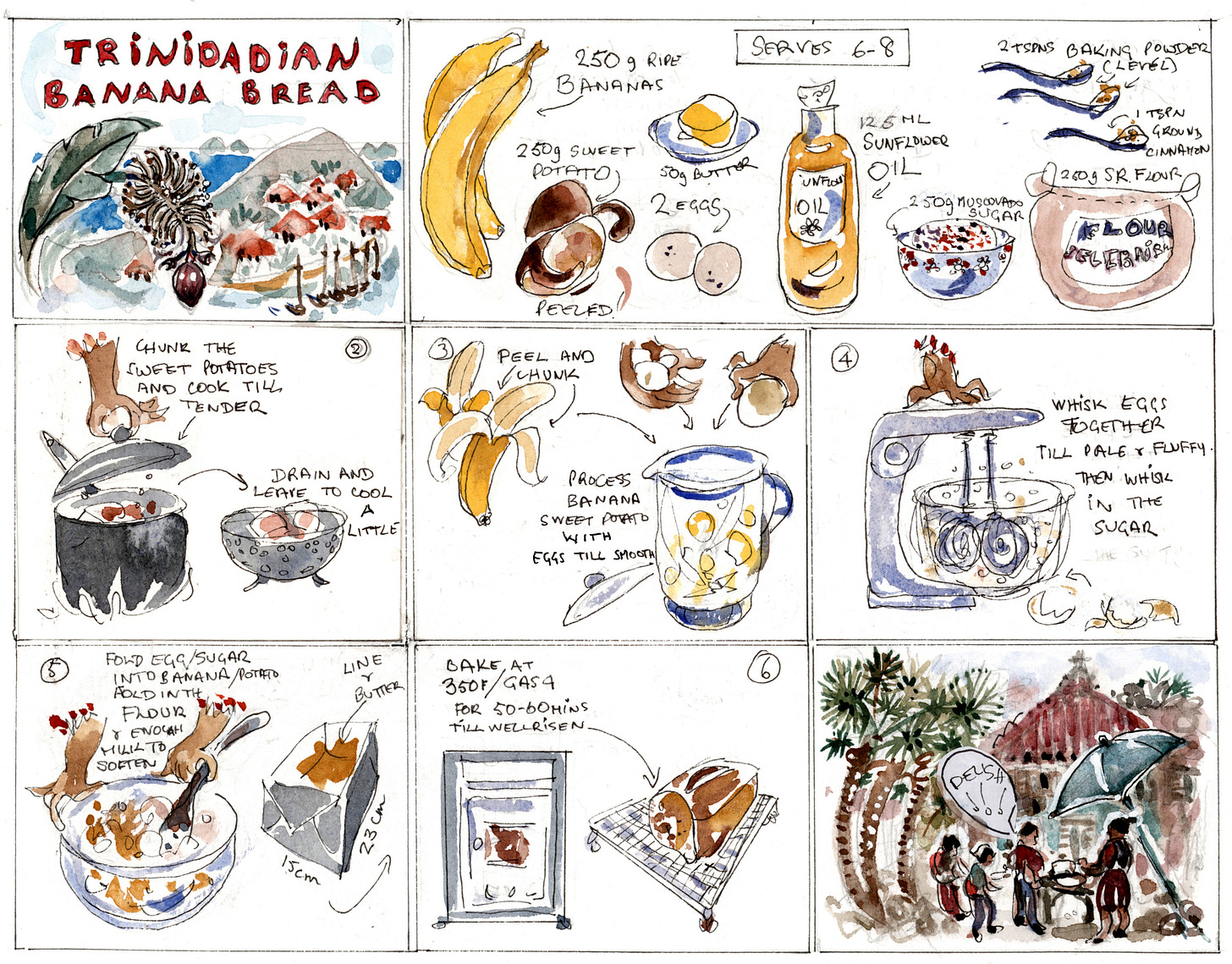

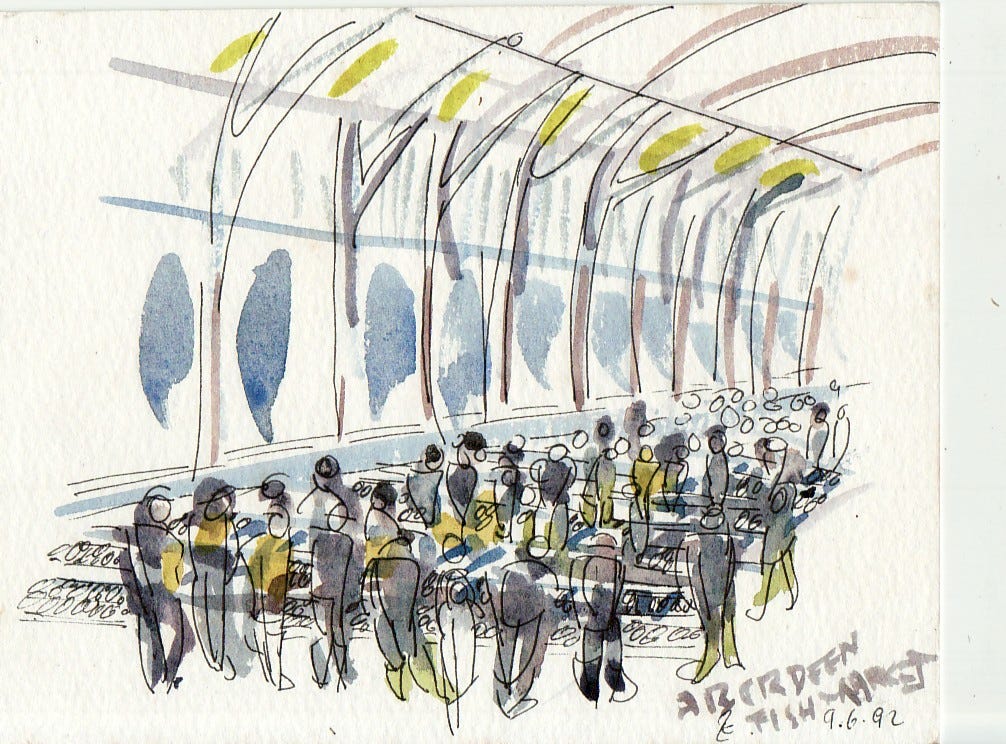
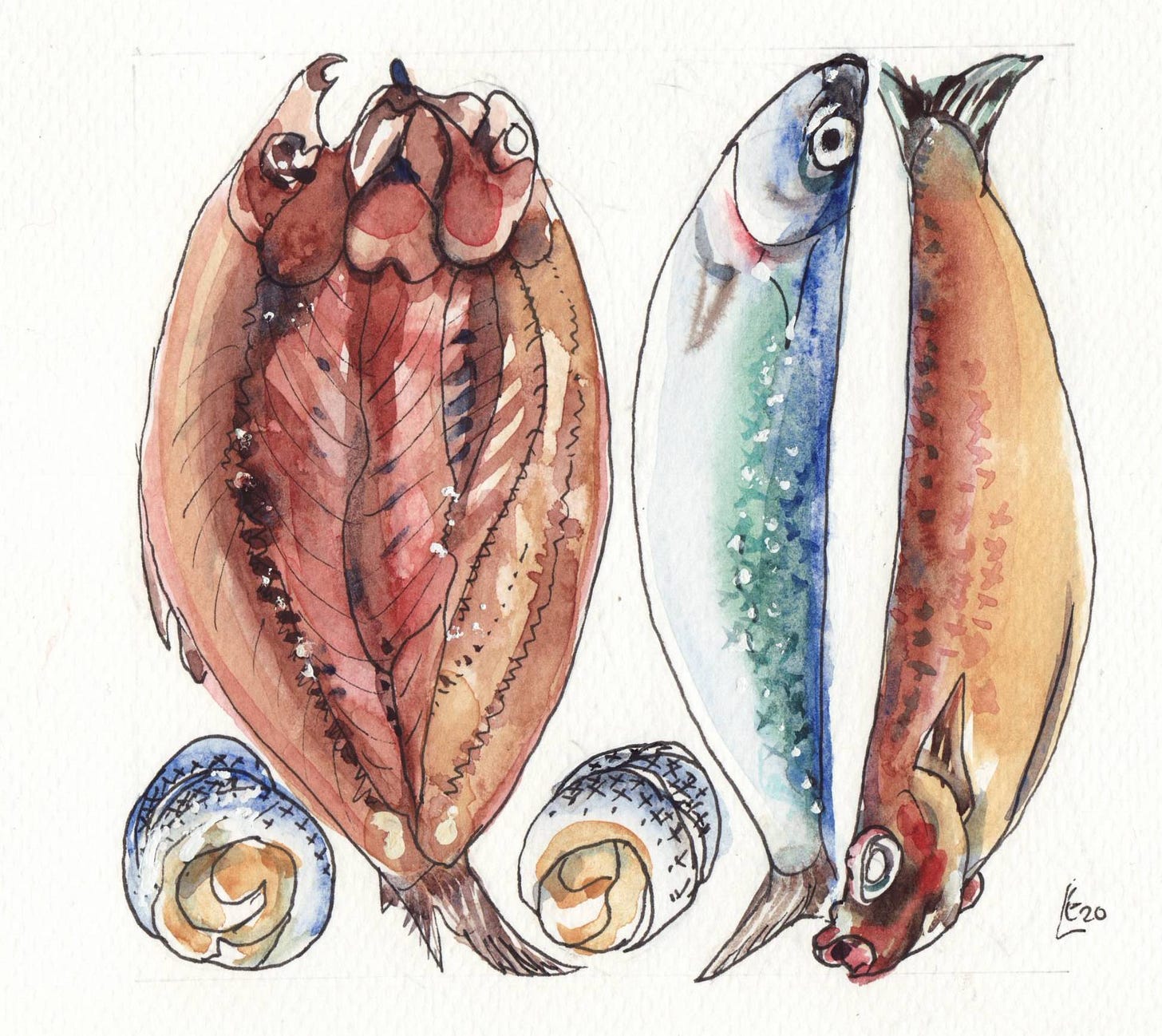
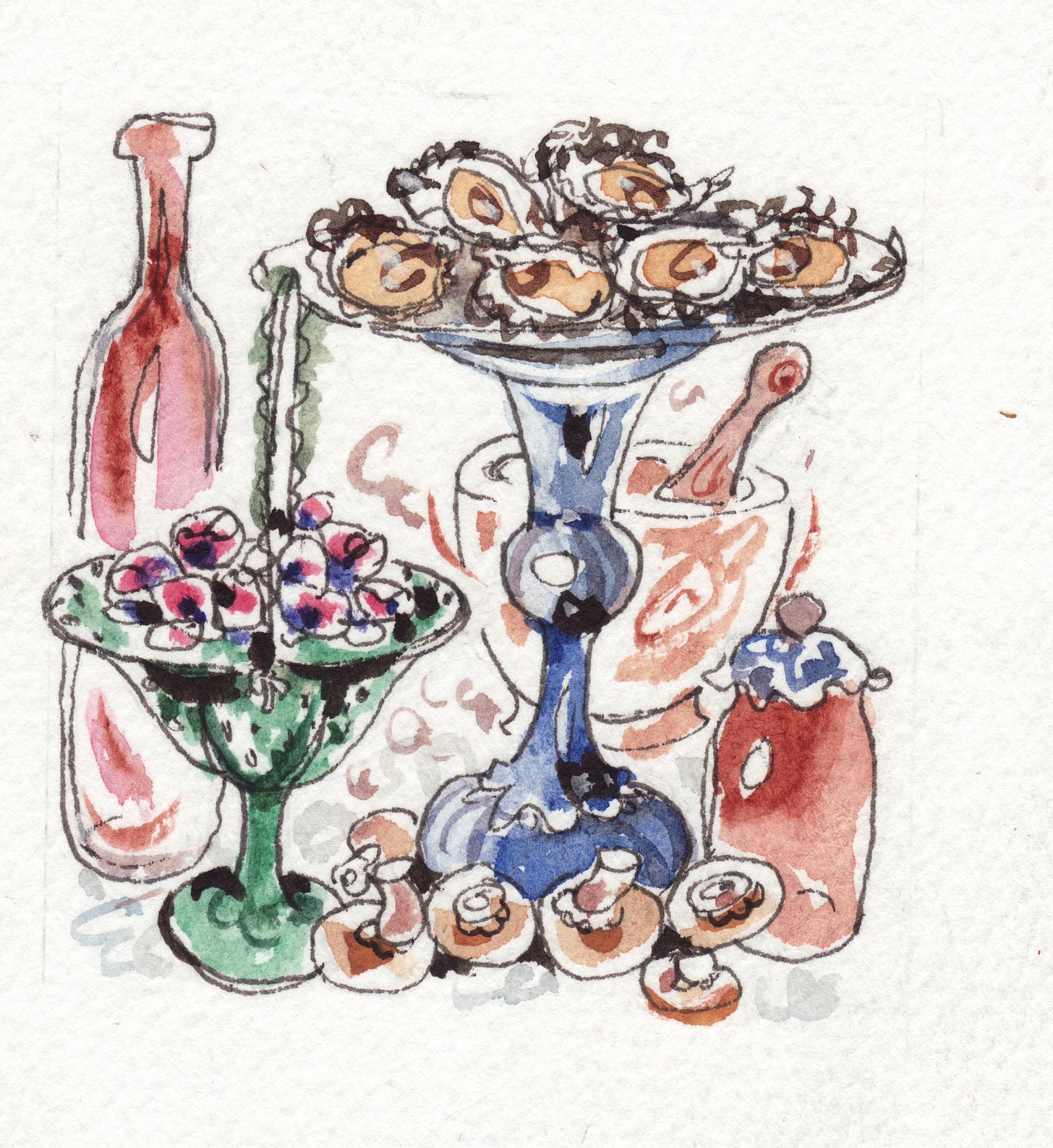
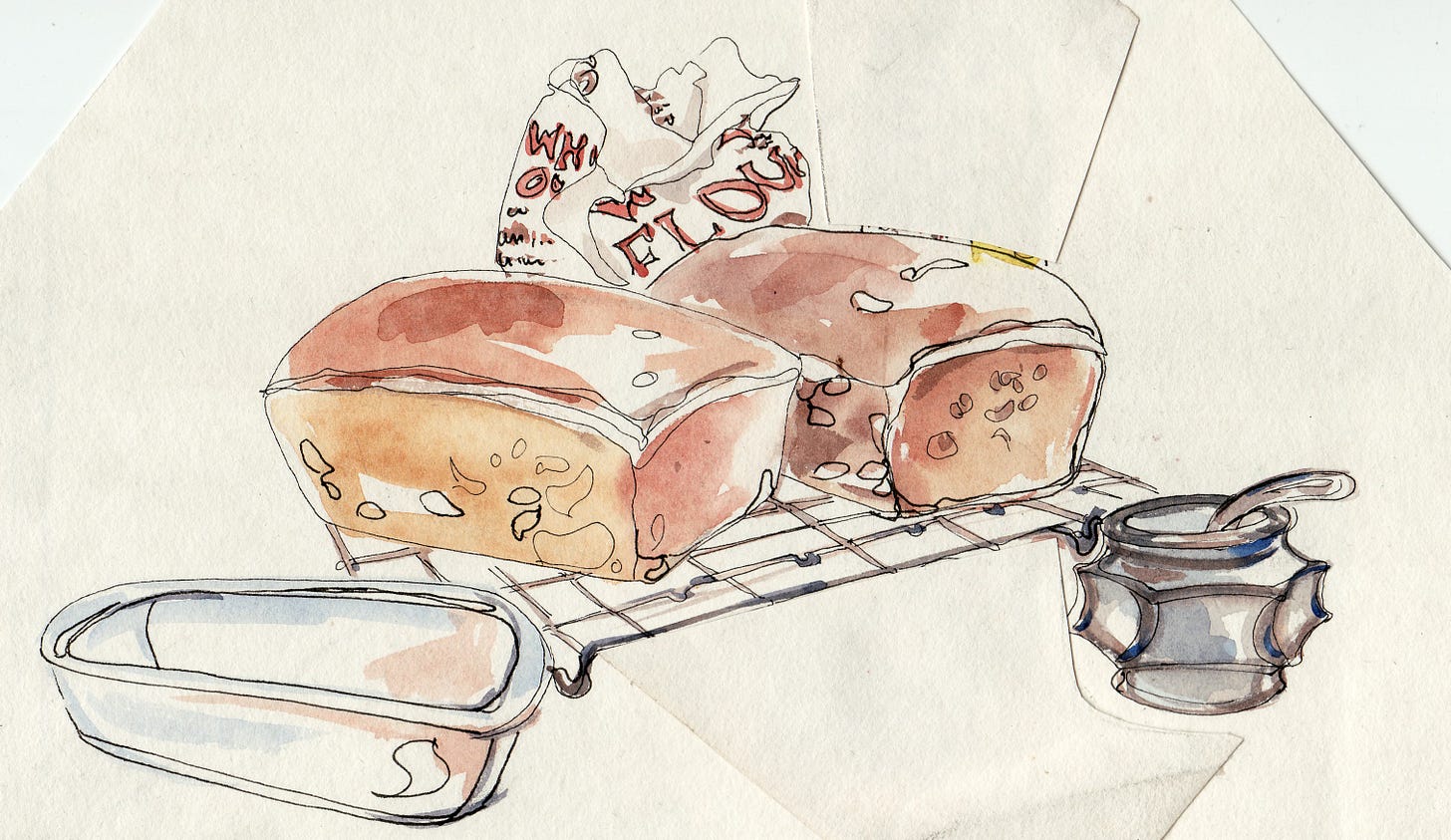
Help! I am getting ready to make the Trinidad Banana Bread, but the directions say to add the eggs twice, and do not say when to add oil, butter, and cinnamon. I am assuming the eggs are beaten until light colored, then added to the other wet ingredients. The dry ingredients (flour, baking powder, cinnamon, and flour) should be sifted together, and folded into the wet ones before baking in the greased tin. Is that correct?
Your recipes and stories make me want to try both Nanny's banana bread and Trinidad banana bread this weekend! I stockpile mushy bananas in the freezer against such a time, as everything else can easily be bought.